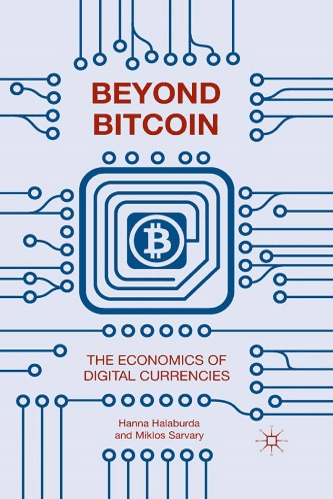Beyond Bitcoin: The Economics of Digital Currencies
$14.50
| Author(s) | , |
|---|---|
| Pages |
192 |
| Format |
|
| Publication Year |
2016 |
Beyond Bitcoin explores the economic forces underlying the design of their features and their potential. Halaburda and Sarvary argue that digital currencies are best understood by considering the economic incentives driving their creators and users. The authors present a framework that will allow systemic analysis of this dynamic environment and support further discussion of the design of digital currencies’ features and the competition in the market.
Introduction:
The goal of Beyond Bitcoin: The Economics of Digital Currencies is to explore the young and dynamic universe of digital currencies to understand their origins and their meaning for our economies. We approach these currencies from the viewpoint of economists, analyzing the needs they fulfill for customers and merchants, the incentives they create for their users, and the way they compete with other potential currencies in the marketplace. Whenever possible, we will do that in a way that abstracts away from technical details of how digital currencies work, making this book suitable for people with little experience or education in computer science, cryptography, and so on.
Sometimes we won’t be able to avoid talking about technical aspects of a currency—for example, we could scarcely avoid discussing the ingenious algorithm that underlies cryptocurrencies such as Bitcoin—but we will attempt to do so in a way that is as approachable as possible. Rather than create a technical manual, we intend to describe the economic forces governing the evolution of digital currencies.
The objective is to understand why certain models seem to succeed over others: what drives competition between alternative currencies, which currency is likely to prevail if one currency can replace another, and what design features (or restrictions) make sense in given economic or business contexts. To this end, we will start at the very beginning: we will describe how human societies invented money, how money facilitated transactions, and how weaknesses in the design of money led to innovation and improvements in the way we pay for things. Digital currencies may seem far removed from such history, or even prehistory, of money.
However, this historical overview allows us to identify some of the core economic forces that drive the use of different types of money, highlight the specific needs that money serves, and illustrate the key attributes that money should have. These needs and attributes are remarkably universal, and they are as important now as they were centuries ago. Their analysis will lay the groundwork for our subsequent discussion of digital currencies and give us a framework in which to analyze them.
Contents:
- Medium of Exchange: Ever-Present Competition
- Platform-Based Currencies
- Cryptocurrencies
- The Road Ahead
Beyond Bitcoin: The Economics of Digital Currencies By Hanna Halaburda PDF
3 reviews for Beyond Bitcoin: The Economics of Digital Currencies
Clear filtersOnly logged in customers who have purchased this product may leave a review.










Lyla Solis (verified owner) –
Digitization is eating the world, and currencies are not immune from this transformation. Halaburda and Sarvary separate the hype from the reality and provide the grounded explanation of digital and crypto-currencies that has been lacking until now.
Colby Alexander (verified owner) –
This book is a must-read for anyone seeking to understand the simple economics of digital currencies to manage the risks and to take advantage of the opportunities that this quickly evolving phenomenon presents.
Mary Monroe (verified owner) –
The book lays out the economic principles that help predict the future of digital currencies. It provides a unique perspective about competition between currencies and the role of digital currencies in platforms. A fascinating read!